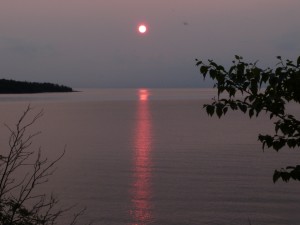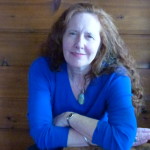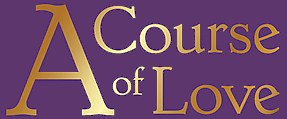 This is a time of knowing who you are and who I Am while at the same time, holding, or carrying, the mystery within you. That mystery is the tension of opposites. It is time and eternity. Love and hate. Good and evil. In other words, All and Nothing. It is the tension of individuation, a tension that has existed since the beginning of time, between time and eternity, between the attributeless love and the attribute laden being. Between the one being of love and the many beings of form, between love’s extension and form’s projection. (The Dialogues, Day39.38)
This is a time of knowing who you are and who I Am while at the same time, holding, or carrying, the mystery within you. That mystery is the tension of opposites. It is time and eternity. Love and hate. Good and evil. In other words, All and Nothing. It is the tension of individuation, a tension that has existed since the beginning of time, between time and eternity, between the attributeless love and the attribute laden being. Between the one being of love and the many beings of form, between love’s extension and form’s projection. (The Dialogues, Day39.38)
This course was written for the mind—but only to move the mind to appeal to the heart. To move it to listen. To move it to accept confusion. To move it to cease its resistance to mystery, its quest for answers, and to shift its focus to the truth and away from what can be learned only by the mind. I.1
Sunday morning. The cabin. Over the fence, the sunrise produces a bold Japanese style painting. Blue mountains, both rolling and steep, neon pink above, one strand of cloud held within the neon pink, as blue as the mountains.
Honestly, it is as if that mountainous far horizon is real. Henry (my grandson) once called the horizon – “the lake.” We would sit on the cabin stoop and he would talk about the lake over there on the other side of the freeway fence. It was not sunrise or sunset when he said this. The sky was vast and blue. I did not deny him his “lake.” Maybe the borderlands of sunrise and sunset are like that, and represent, as humans do, the truth of our state of being here. Sort of in between. Always coming and going.
The sky lightens. The mountains are gone. The glow remains.
A friend wrote me the other day, saying “The Course seems to have become your life.” He  asked, “Is that so?” He said that when he met me, only a few years ago, it didn’t seem to be. I wondered. Is this so? Have I crossed another borderland of acceptance? One that says that I am not only giving my full attention to living in this dynamic and creative way that has been revealed, but that I’m willing to have it be my life, to be a voice for it? Had I been hanging out with the creative tension of that question, as I hung out with the sun’s dramatic rising? Was it coming on for a day? Or for the last 17 years?
asked, “Is that so?” He said that when he met me, only a few years ago, it didn’t seem to be. I wondered. Is this so? Have I crossed another borderland of acceptance? One that says that I am not only giving my full attention to living in this dynamic and creative way that has been revealed, but that I’m willing to have it be my life, to be a voice for it? Had I been hanging out with the creative tension of that question, as I hung out with the sun’s dramatic rising? Was it coming on for a day? Or for the last 17 years?
The question sat. Then . . . I found definitions yesterday. Definitions within A Course of Love about the words used within it. So many times I’d try to find them and they’d refuse to be found. All was amorphous, like a sort of teasing or a gentle asking: How do you feel about this? What meaning does this have to you? How does this idea meet you where you are right now? The requirement: to let an idea pass through you, and not know what it was about for as long as it might take for knowing to come. The certainty that you couldn’t look up the answer. It didn’t exist apart from you.
Still, momentarily excited, I took note of these definitions. Finally! I thought. Then, by evening, without thinking about it at all, I had begun, I now see, to question. Somewhere I knew not, those definitions were at work in me, turning from answers to questions. This morning, as the sun rose, I begin to feel the tension.
C:19.15 Philosophy applies thought to mystery and that is why philosophy becomes such a muddle of words. It is difficult for you to accept that what you most need to know cannot be achieved through the same methods you have used in order to know about other things.
We don’t see the definitions until we see them. Perhaps until we’re meant to see them. Perhaps until we don’t need them anymore. There’s a reason these definitions I found (and I won’t say where) come near the end of The Dialogues. There—they confirm rather than tell. There, they contribute—when we even see them—to what we have already discovered. Can we trust that we don’t need the definition in advance of knowing?
 I may be joined with this Course so that it is not defined. As long as I live, and perhaps beyond the years of my life, I can hold the mystery, and respect each one’s right to hear this Course directly, in their way, in the uniqueness of their own joining with its giver; with the joining of the giver with their own life.
I may be joined with this Course so that it is not defined. As long as I live, and perhaps beyond the years of my life, I can hold the mystery, and respect each one’s right to hear this Course directly, in their way, in the uniqueness of their own joining with its giver; with the joining of the giver with their own life.
Yet the matter is broader than definitions. It runs all the way through the Course in our change of mind about who we are. With the change to our way of knowing. And it is particularly relevant to the notion of the ideal self, so thoroughly discussed in The Dialogues, and often amongst ourselves, where the quest for the ideal comes couched in many guises. It is wonderful to be able to be a voice that can suggest that we are each the mystery that is spoken of. Each of us are called to embrace the mystery of ourselves and to embrace the mystery of our relationship with our Creator, and the givens of our creation. There is no need to compare, to give undo attention to the attitude of those who suggest that the answer is known, that there is a right way to be, a better way to be, an accomplished way to be. No one else has my life to live . . . or yours.
Can we look at one another and see the marvel in whatever creative tension we are carrying at the moment? Can we see that our turmoil is no less than another’s peace? Our peace no more than another’s tender vulnerability? Can we trust that each one is where they’re meant to be and that there is no ideal other than being one’s own Self and embracing the tension and the mystery and even the dark mystery, that allows one’s own Self to be revealed?
This is the beginning of individuation in union and relationship. This is the beginning of wholeness. What you strive for here is revelation. For only through revelation can you know all and still hold the mystery. D:Day39.5


Thank you, Mary. Yes, it’s all the mystery of love coming into form, isn’t it?
Thank you, Brett, for embracing the mystery along with me.
Laura, Which Richard Rohr book are you reading? I have had “Falling Upward” by my bed for ages (well, probably 2 years). I keep returning to it and find it so in tune with A Course of Love. (I haven’t read any of his other books.) When I was in a Centering Prayer Group, ACOL felt like an elephant in the living room. People knew I’d written of it but it was pretty much a “not to be talked about” subject. It was funny to me how we could speak of revelations from the past but not the present. Isn’t that always the way? You’ll know the right time if it ever comes.
Thank you for that, Mari. I think it is coming. This last Rohr discussion was astonishing to me. I mostly just listened as the members of the group, who have known each other for years, discussed awakening and transformation and honoring our own divinity, and, for quite some time, the notion of honoring paradox, mystery, and tension. The book we read was The Naked Now. It is so convergent with what I have read so far of ACOL. I’ve read most of Rohr’s work. Immortal Diamond reminded me so intensely of ACIM when I read it, with its emphasis on awakening to our true Self and in non-dual ‘seeing.’
Our next book is The Intimate Merton, and I’m thrilled about that. I hope to be able to start a conversation at some point about ACOL. I do not think it was accidental at all that I found this amazing church. It’s a mega-church with a congregation of around 15,000 but it doesn’t feel overwhelming or impersonal at all.
I’m curious about your CP group. I had conflicting feelings about a Centering Prayer group I belonged to and am still not sure why.
My family of origin is in nothing short of what seems to be chaos just now. It is a place of liminality for me, for sure, but there is SO much less fear as a result of ACOL. I almost feel that I ran across it so I could navigate this choppy ocean with presence and love.
Much love to you. I am grateful for you.
Laura
Mari, I just reread your blog for the 3rd time. So much in there. “Can we look at one another and see the marvel… Can we see that our turmoil is another’s peace? …There is no ideal other than being one’s own self and embracing the tension and the mystery and even the dark mystery… ” I might add… especially the the dark mystery. As Carl Jung said, the shadow is 95% pure gold.
The magnificent quest “… that allows one’s own Self to be revealed.” I am passionate about this. Your perseverance in this journey, no matter the cost in human terms, and your having walked with ACOL for 17 years!!!! ….appeals to me profoundly. Have I ever said how grateful I am????
Paula, you dear…I am so grateful for you too! I know you share this feeling with me, the embrace of the dark side, all of it. I don’t know how to nurture the heart’s emergence without all of that. And I don’t feel that Jesus asks us too. Do you feel it’s the feminine part of spirit (not to mention humanity) that makes us capable (or unable perhaps), to do anything other than hold it all?
Mari, your post brings a sense of abundance for me. This very life is abundant in feelings, experiences, and wonder. All held in the mystery of love.
Mari,
Thank you for such a beautiful beautiful beautiful post. This post really sang a sweet rememberce of LOVE call and enjoying and being a part of the mysteries of ACOL. It just makes me want to savor the spirit and blessings of ACOL even more and bring a full time commitment of being apart of this loving and savoring part of ACOL in the present moment. Thank you.
Hi Mari,
My Richard Rohr discussion group just tonight discussed this notion of acceptance of mystery and paradox. I wanted very much to bring up ACOL but felt a little incompetent about doing so. I think they’d be open to hearing about it. I just felt like I needed to listen…..back to work for me tomorrow, so I will just say thank you, again, for a beautiful and resonant message of love.
Peace and much love,
Laura